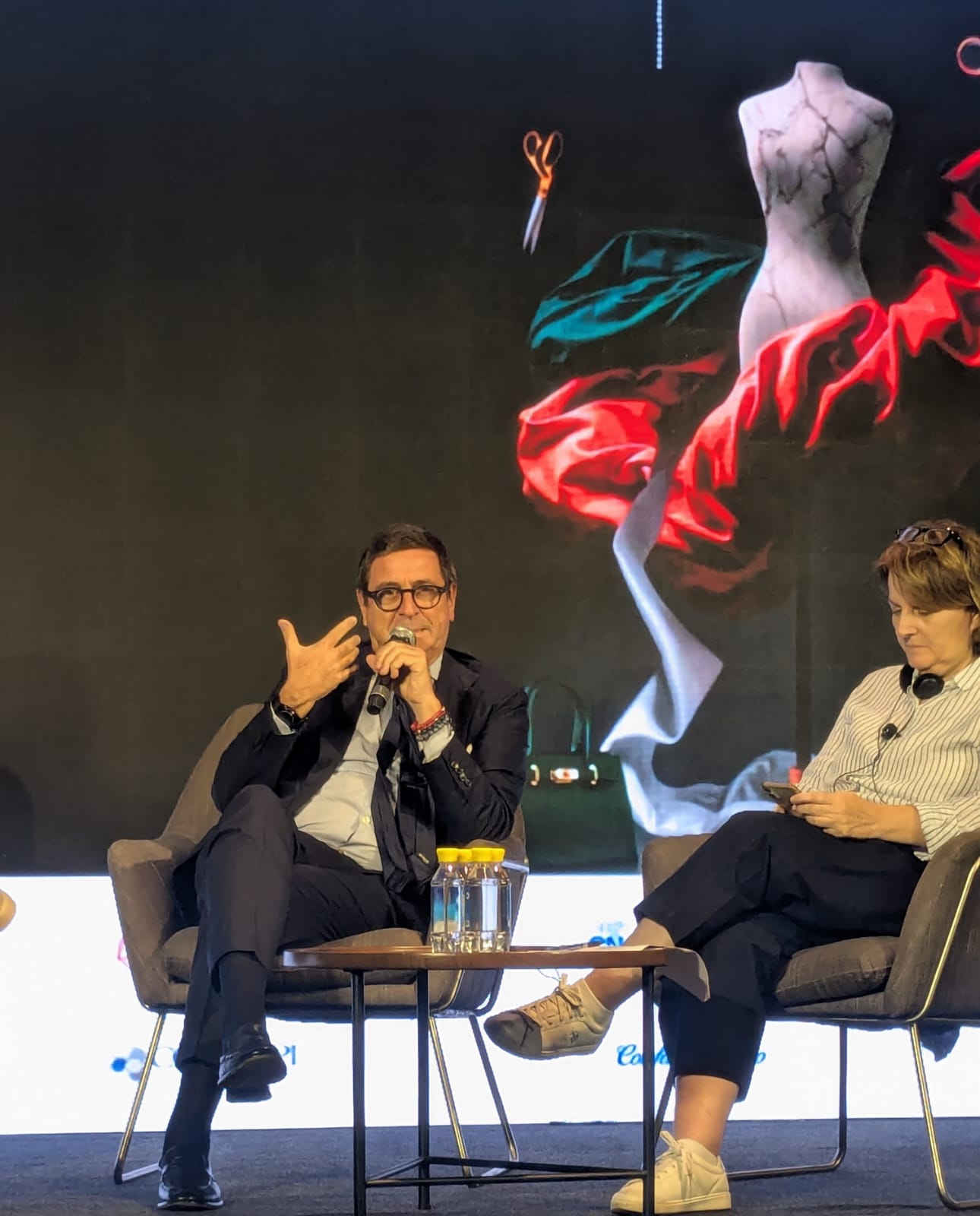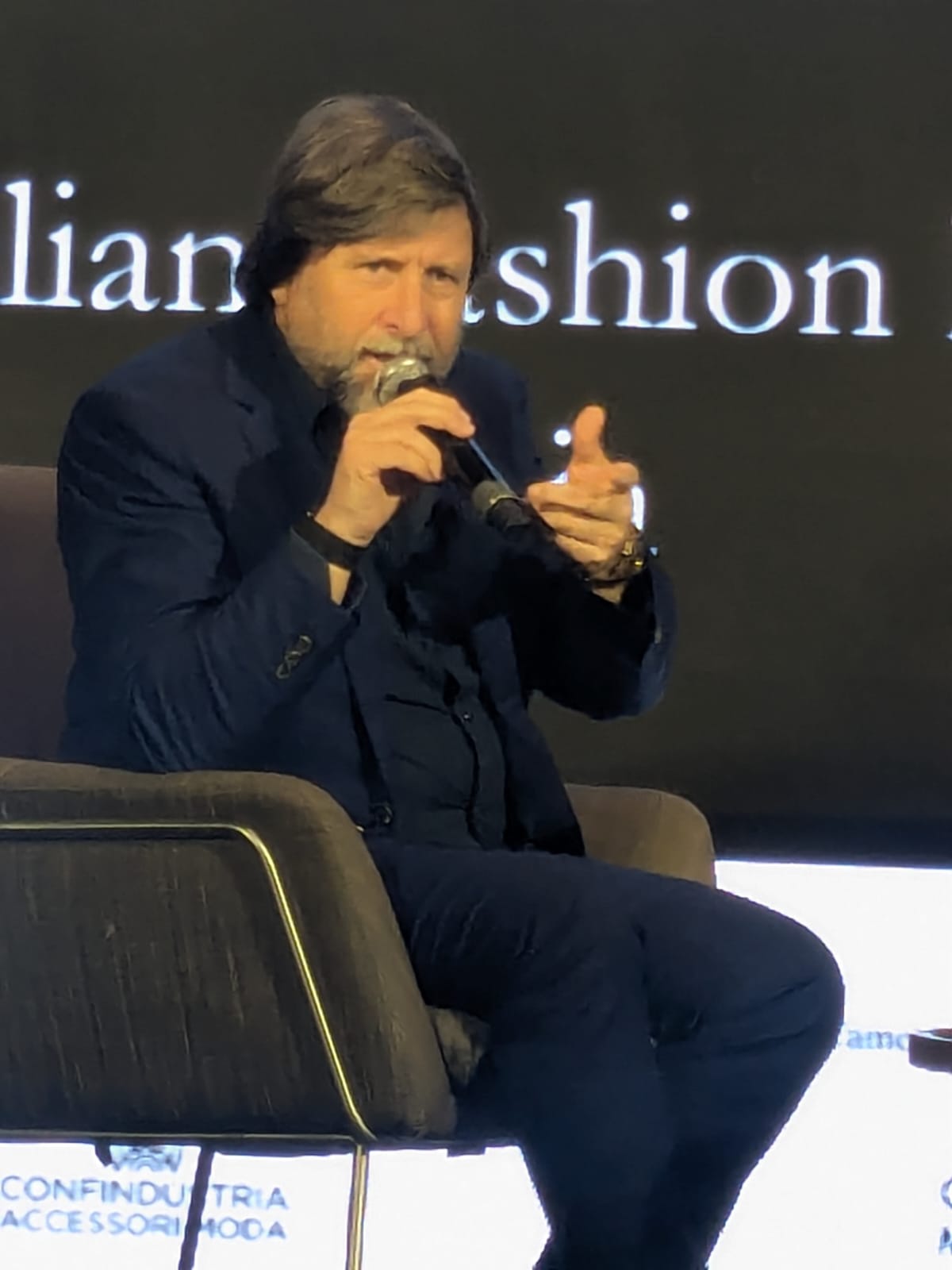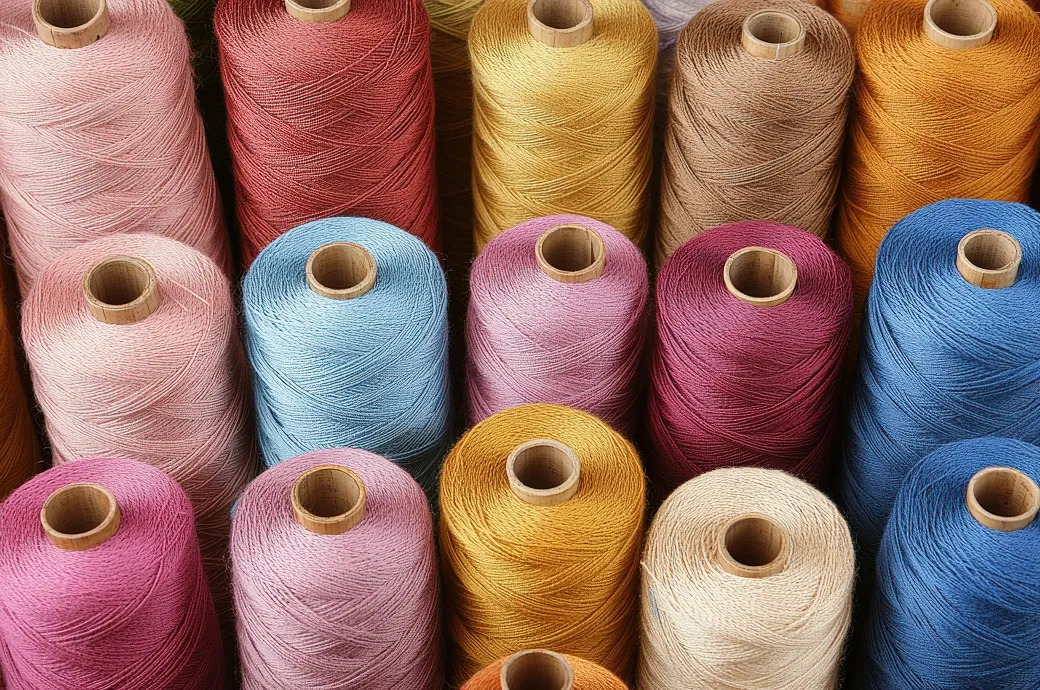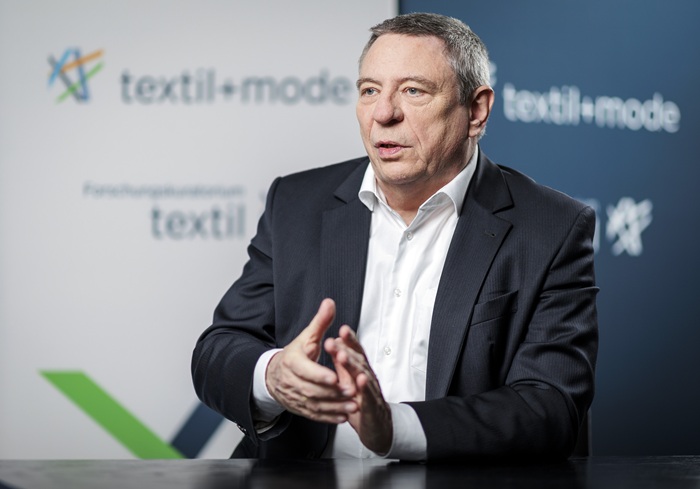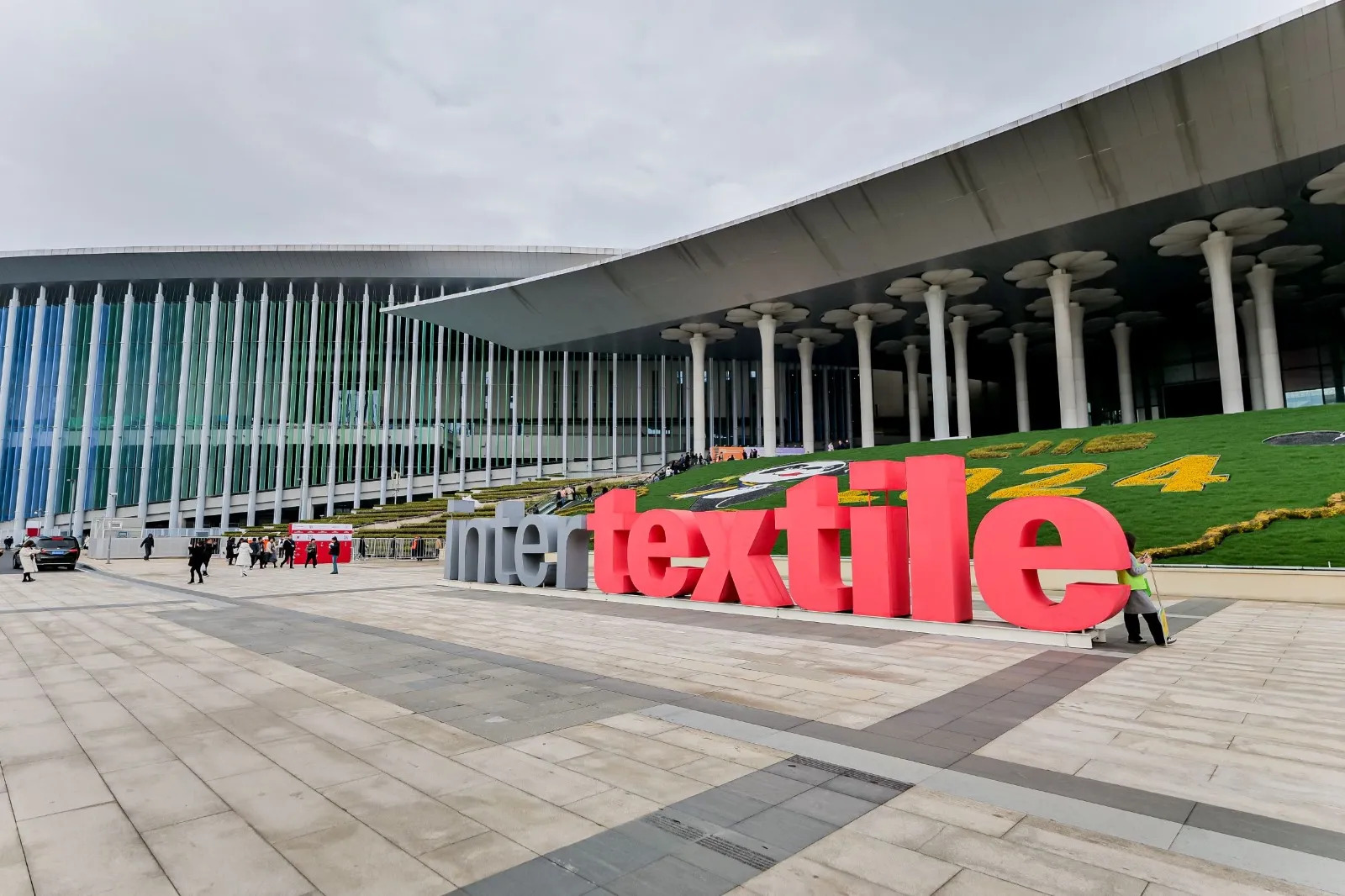FW
Cotton Council International’s (CCI) 9th biennial summit was held in the US, November 5 to 7, 2016. The summit explored challenges and opportunities facing the general use of cotton in the textile supply chain, as well as specific topics surrounding US cotton, including innovation and global economic issues.
Cotton is facing increasing competition from manmade fibers that can offer greater length uniformity at a lesser cost. So the themes of change and challenges to business-as-usual permeated the conference. The practical value of longstanding economic models, such as supply and demand, in today’s increasingly complex and tech-driven world was debated.
Some 415 delegates from 31 countries gathered for the summit. The audience represented 16 per cent of global cotton use. US cotton producers reiterated their commitment to maintaining strong relationships with the global cotton supply chain.
Economics and innovation were common threads of the conference, which included a cotton commodity update and an examination of certain domestic policies relevant to cotton. The panel comprised US exporters and textile mill representatives. Additional updates on agricultural, fiber quality and textile innovations were presented.
CCI hosted the conference in cooperation with Cotton Incorporated and USDA’s Foreign Agricultural Service to help facilitate global networking opportunities for US cotton.
Non-tariff barriers are the biggest challenge for Pakistan’s exports. These are in the form of non-tariff barriers like standards, technical regulations, sanitary and phyto-sanitary measures and conformity assessment procedures.
Maintaining of quality and standards is important for Pakistan’s exporters to remain competitive in international markets. The country plans to ask China and the United States for help in upgrading the laboratories to the international mandatory standards.
The Pakistan Standards and Quality Control Authority has already been established to ensure quality products. On the other hand, the high charges taken by the Pakistan Council for Scientific and Industrial Research and the Pakistan Industrial Technical Assistance Centre for making various tests are causing a lot of problems for small and medium exporters who have to meet the conditions laid down by their foreign buyers.
Large industrial set-ups have their in-house test lab facilities whereas small and medium exporters are compelled to pay a high price for each test. The Synthetic Fiber Development and Application Centre, for instance, was established about three years ago to facilitate small and medium sized exporters test their export products as required by their customers. But exporters complain that for one single test they have to pay around Rs 15,000 to Rs 20,000, which puts an extra burden on the input cost of products.
Ralph Lauren is shutting down its sub-brand ‘Denim & Supply’. Instead the company will cater to the denim market through its brand Polo. Apart from Polo, Ralph Lauren owns brands such as Chaps and Club Monaco. Club Monaco operates 59 stores via licensed partners and 77 department store concessions.
Denim & Supply was created in 2011. Its range featured fine denim items combined with military-style jackets and suits, and included signature pieces with a bohemian vibe. In the last few seasons, the range displayed more of an urban feel. The brand gained recognition for its style, but struggled to attract its 15- to 30 year-old consumer target, due to its high price positioning. It was distributed by denim specialty stores and also available through retail corners in department stores.
Despite enjoying an international presence, with some 20 Denim & Supply branded stores, the label accounted only for a very small part of the Ralph Lauren group's business.
Ralph Lauren has also decided to stop working with the less profitable multi-brand stores: between 20 and 25 per cent of the label’s wholesale clients will not be served any longer. Fashion brand Ralph Lauren, that opened in 1967, is named after its founder.
In Africa, Morocco leads the way in apparel exports and the country is set to hold firm in that position as more markets look for shorter delivery times. Benefitting largely from business with Inditex, the parent company of brands like Zara and Massimo Dutti, Morocco exported more than $3.5 billion worth of apparel in 2015. Moroccan producers have experience in quick response.
Morocco has deep know-how in producing for famous brands. Fast fashion is a major domain and it fulfills the demand of retailers and brands who have to serve clients very quickly. The Inditex group has doubled production in Morocco. Speediness is an important reason to choose Morocco for production.
Among fashion exporters Morocco has reached the seventh position. It has high ambitions to foster this industrial sector in terms of quality, sustainability, technology and logistics. More and more international brands and private label retailers are working with agents in Morocco to handle their sourcing, dealing and buying. Demand for fast fashion now covers 25 per cent of total purchases and short-term deliveries (less than six months) account for 35 per cent of order volume. Thanks to its nearness to Europe, Moroccan companies can compete with the Asian apparel producing nations.
For the last two years the hosiery and blanket industry in Ludhiana faced dull sales owing to warm winters. Now the industry is reeling under the aftershock of demonetization. Some units have cut down production or stopped it altogether owing to the cash crunch. So have the 200-odd blanket manufacturers in Amritsar.
Ludhiana has nearly 15,000 big, medium and small hosiery and knitwear units making shawls, sweaters, jackets, gloves, caps and warmers. Jammu and Kashmir is Ludhiana’s biggest market for hosiery products as it has long winters and a huge inflow of tourists and pilgrims at Vaishno Devi. But all orders from the valley this year have got cancelled due to the unrest.
The hosiery industry was already hit by relatively warmer winters in the last two years. And now the note ban has left it with no cash to pay labourers. The return of unsold stock from wholesalers and retailers was also high. After the note ban, there has been no fresh demand from retailers and wholesalers, who in turn say there are fewer customers. So units in Ludhiana feel there is no point in producing when there is no demand. They expect to suffer losses to the tune of crores.
World cotton production for 2016-17 is expected to be seven per cent higher than last year. India will remain the world’s largest cotton producer, although its production is forecast to remain unchanged from 2015-16. Output in China is projected to decrease by four per cent while production in the United States is expected to grow by 24 per cent.
World cotton consumption may remain unchanged for 2016-17 despite the widening gap between polyester prices and international cotton prices. Mill use may rise in three of the top ten consuming countries — Bangladesh, Vietnam, and the United States. This will offset losses in China, Turkey and Brazil, where mill use is likely to reduce.
With China paring its cotton stocks, and demand continuing to surge, Indian cotton exporters see an opportunity for the current season. Currently, China is buying its cotton requirements from the US. But since Indian prices are as competitive as other international prices, exports may happen to China once the cash crisis in India subsides.
Stocks in China are expected to decline by 15 per cent by the end of 2016-17. But Indian shipments of cotton to Pakistan have remained muted due to border clashes. Pakistan is one of the major buyers of cotton from India.
Surat’s textile business has been hit by the domnetisation. The city’s power loom sector has already clocked losses amounting to Rs 800 crores. Production in the textile sector has halved. Earlier, there was production of four crore meters of cloth a day. Now production has fallen to two crore meters a day.
Surat is home to 50,000 power loom units, another 40,000 units for value addition and about 400 dyeing units. About 10 lakh workers are employed within the textile sector in Surat. The textile business in Surat has an annual turnover of nearly Rs 350 crores.
Workers are not paid salaries because of the limit on withdrawals. The cash crunch has forced textile and power loom units to shut at least three days in the week and do away with the night shift entirely.
The bulk of the workforce is with dyeing and printing units in textile processing houses, with the power loom sector, and with packaging and unloading in the trading sector. Most of the workers employed in this industry are migrants from Uttar Pradesh, Bihar, Maharashtra, Rajasthan, Orissa and Andhra Pradesh.
Many workers do not show up because they are queuing up at banks or have gone back home with whatever savings they have. So, processing houses are running for only three or four days a week.
"When consumers want to buy a pair of jeans, they are influenced by a broad range of factors - a total of 12. Above all what counts more are appearance and comfort, with fit playing a greater role in the US and Germany. The recent editions of Kingpins Amsterdam and Kingpins New York (October-November 2016), presented some really interesting survey reports by Invista on women’s jeans consumption, expectations and difficulties when purchasing jeans."

When consumers want to buy a pair of jeans, they are influenced by a broad range of factors - a total of 12. Above all what counts more are appearance and comfort, with fit playing a greater role in the US and Germany.
The recent editions of Kingpins Amsterdam and Kingpins New York (October-November 2016), presented some really interesting survey reports by Invista on women’s jeans consumption, expectations and difficulties when purchasing jeans. The study carried among about 2,500 consumers from the main denim markets worldwide – US, China, Germany, Spain and Brazil interviewed 18-49-year-old women who had purchased at least one pair of jeans in the last six months and wear the popular denim at least once a week. The survey was aimed at learning the role of jeans in women’s wardrobes, and how they feel when purchasing them and what they need or miss when buying denim.
The study discovered that women own an average of eight pair of jeans. Despite this, Brazilian consumers own 9.3 pairs each, followed by US and German ones
9.3 pairs each, followed by US and German ones
who own 8.5 pairs each. While counting in which market consumers own more than 10 jeans pairs, once more Brazilians showed how much they love denim as 38 per cent of them (the highest rate among all five markets) owns such quantity of pairs.
Denim for every hour
Majority said they wear jeans when running errands (Germany showed the highest rate with 93 per cent), going out at night (Brazil counted for 84 per cent) or for a dinner (Germany for 84 per cent). When referring to who wear them during working hours, there are different perceptions. For US and Chinese rates are relatively low as they wear them for respectively 51 per cent and 56 per cent, while all other markets register higher levels (German people wear them for 84 per cent). At the opposite level, when asked if they wear them at home, the lowest level was registered in Spain and Brazil (respectively 25 per cent and 31 per cent), while for other markets at over 60 per cent.
As per the survey, the most popular fit for women in Spain, Germany and China is slim fit (29 per cent), while the US prefers skinny and Brazil opts for straight.
Shopping for jeans, a stressful experience
While most say it’s a must have comfortable outfit, shopping for a pair of jeans is equally stressful, the survey shows. “It’s difficult to find jeans that fit well all over,” remark respondents. They hardly can find jeans that fit well around waist, hips, bum and legs. Brazilian women are one of the most frustrated lot among the shoppers from other countries.
It’s almost opposite for China. Even if the average result about how “easy” buying a pair of jeans was 52 per cent, Chinese answers showed to consider it as an easy task for 75 per cent. They are the most enthusiastic about it as they perceive it as a very positive experience – they are far more likely to describe it as enjoyable (48 per cent), exciting (22 per cent), easy (22 per cent) and inspiring (21 per cent).
Selecting close to perfect
When women cannot find what they want, 43 per cent of them simply end up buying the best most similar type of clothing they can find. Reacting in a totally opposite way are 42 per cent of them who prefer not to buy anything – with German consumers most likely to do so (62 per cent) and Chinese ones less likely to do it (21 per cent). The remaining 15 per cent of the sample rather looks for an alternative type of clothing – and most often end up buying a pair of leggings.
Buying jeans by emotion
Purchasing a pair of jeans is strongly tied to emotional aspects as women often consider a pair of jeans that fit them well as a very important ally. For instance, 72 per cent of the interviewed people think: “I have my favorite pair of jeans and I will be devastated when they become unwearable”. Another 58 per cent retains that when finding the right pair, they will have to pay a bit more, while others believe that good fitting jeans are really expensive (62 per cent).
Denim survey: Buying factors
Invista also asked consumers who wore jeans made with Lycra Beauty fabrics with the following result: “They are the first pair of jeans I’ve worn till the end of the day without the knees losing their shape” and others said: “These jeans are flattering and fit in all the right places.” Wearing jeans that don’t lose their shape and make who’s wearing them at ease and beautiful are key factors brands and companies have to take in consideration more for the future.
Chinese imports of cotton yarn in November may increase slightly compared with October. Supply is not expected to be tight, and price is likely to be weak. Price of Indian carded 32S for airjet may rebound.
Cotton yarn imports in January to September 2016 were down 20.5 per cent on the year. Vietnam, Pakistan and India remained the major cotton yarn suppliers for China in September, totally sharing around 71.5 per cent.
Vietnam ranked first with price and tariff advantage, and Pakistan was in the second position with stable demand for low-count carded cotton yarn and siro-spun cotton yarn from Chinese buyers. India declined to the third position in September amid slanting high price.
India was the largest import origin for combed 30-47S/1 in January to September 2016, sharing around 50.2 per cent, as the price of Indian combed 30-47S/1 enjoyed an absolute advantage. Vietnam was the biggest supplier in August 2016.
Import unit price of cotton yarn increased in September. The price rise of combed cotton yarn was steeper than the price rise of carded ones in September. Month-on-month increment of combed 8-25S multiple plied yarn was the biggest in September, staying at around 8.7 per cent, and increment of combed 25-30S multiple plied yarn was the smallest, staying at around 1.8 per cent.
VF Corporation has reduced its global carbon emissions by 12 per cent from 2011 to 2015. VF is an international apparel and footwear company. It owns the brands Timberland and The North Face. VF achieved these reductions while seeing vast expansions to its business, adding more than 500 sites to its global operations within the five-year period – a 40 per cent increase driven mainly by retail store expansion.
The reduction efforts focused on four areas of operation--manufacturing, distribution, retail, offices and facilities. VF achieved half of this 12 per cent reduction from increasing its use of clean energy, renewable energy credits and carbon offsets. The other six per cent came from smaller initiatives such as employee behavior change programs and various energy efficiency measures such as installing LED lighting in retail stores, technology upgrades in distribution centers and the construction of energy efficient facilities.
VF is also working toward its 100 per cent renewable energy goal across all owned and operated facilities globally by 2025. It has taken steps to be an industry leader in sustainability with its global carbon reduction efforts.
Timberland is ramping up its circular economy efforts. Outdoor apparel giant The North Face has been committed to a chemistry program which aims to create significant environmental savings that go beyond compliance, to identify environmentally preferable chemicals and to reduce overall chemical use in its supply chain.

